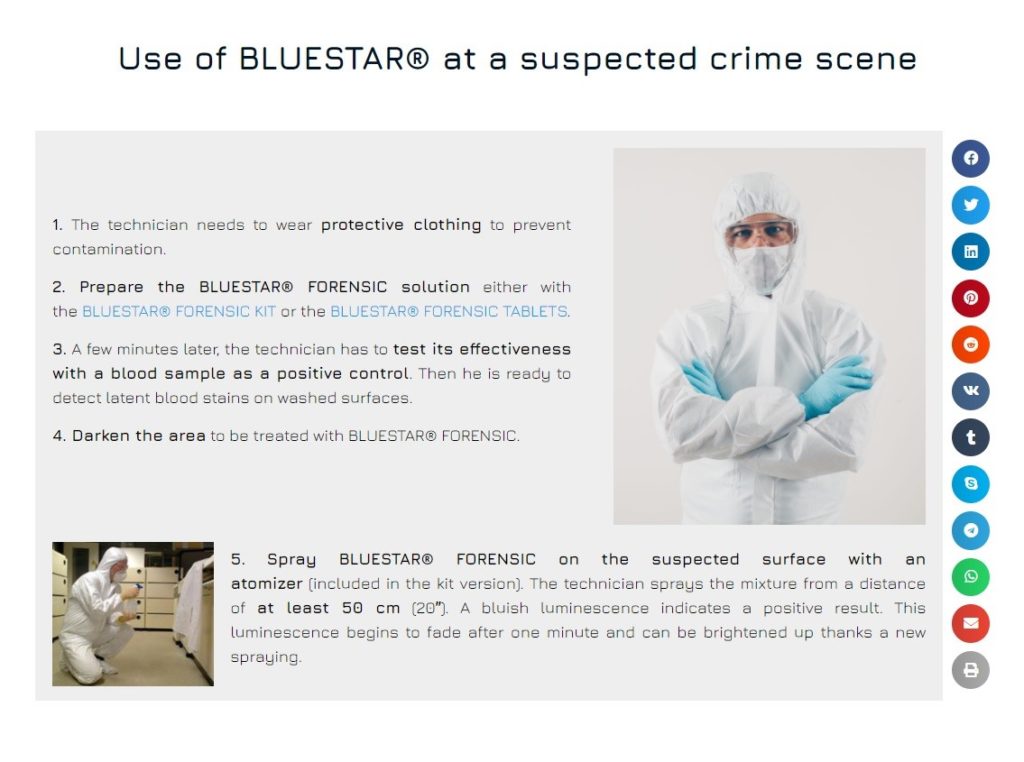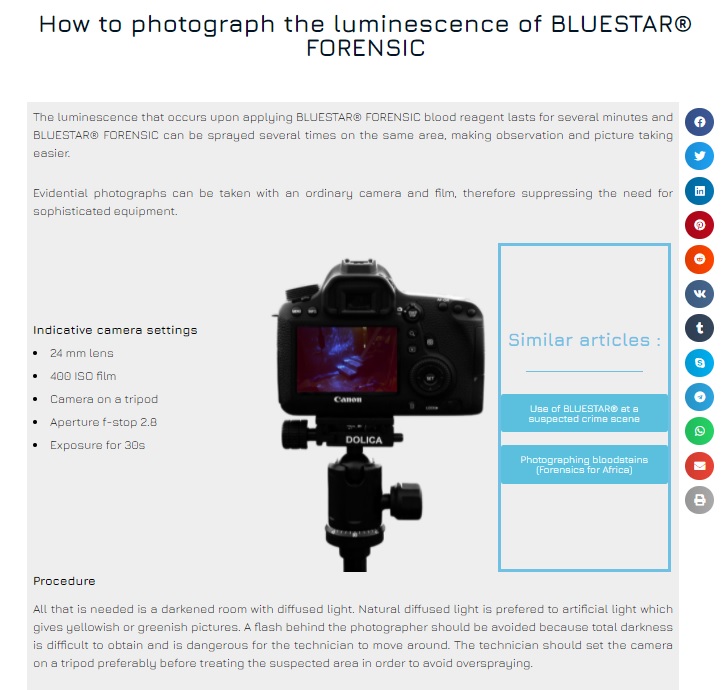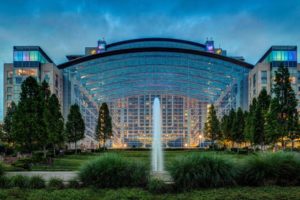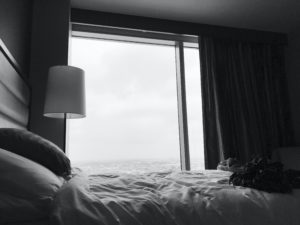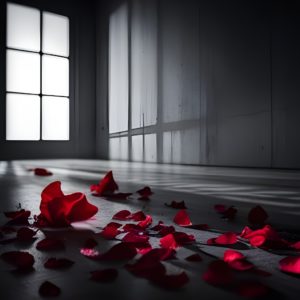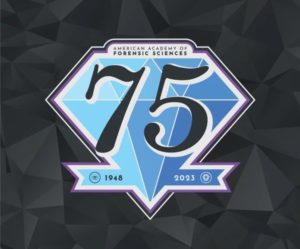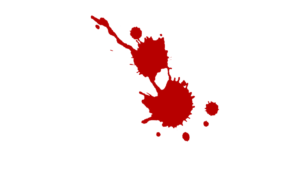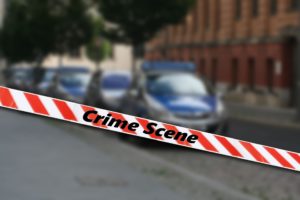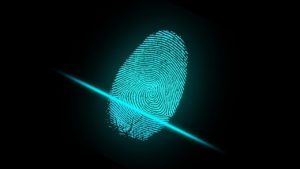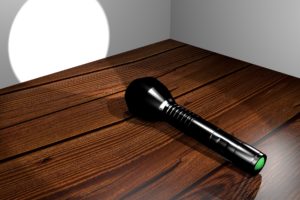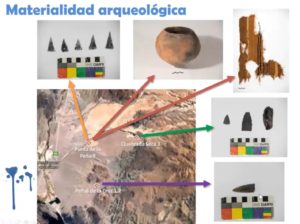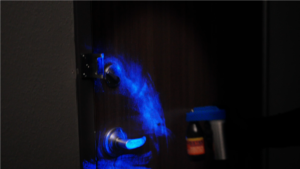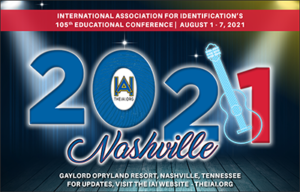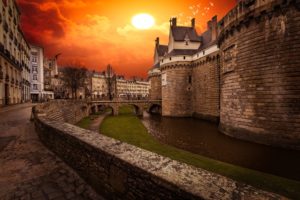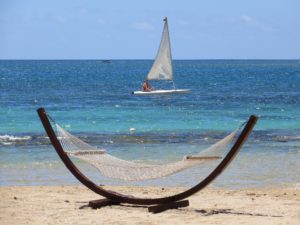Photographing bloodstains
Photographing bloodstains: Bluestar reagent
FORENSICS 4 AFRICA 07.07.2016 (Nick Olivier)
In the late summer of 2012, police officers in a small Midwestern town were called to the scene of a homicide. The caller reported that they had explored the creek in a wooded area at the north end of town and found a deceased man weighed down by rocks in the creek.
The victim had significant neck injuries that appeared to be consistent with a large, sharp weapon. Further examination of the area revealed a trail of blood about 20 metres long which led to a large pool of blood in a homeless camp next to the stream.
Dr. Tim Wilson – Associate Professor and Chair Department of Criminal Justice – Missouri Southern State University
Police located a machete between two trees near the blood trail. Investigators did their best to document the blood trail in daylight; however, due to the length of the trail, they were unable to show it in its entirety. Investigators returned to the scene after dark in an attempt to obtain a photograph of the blood trail using Bluestar Forensic Latent Bloodstain Reagent, a luminol-based blood visualization chemical that causes blood traces to luminesce.
The process of photographing bloodstains at an outdoor crime scene requires several important pieces of equipment and adequate personnel in order to capture the luminescence after the chemical has been applied, while at the same time illuminating the scene adequately so that the viewer can appreciate the composition of the crime scene. This list includes:
- DSLR camera with a minimum f / 3.5
- Tripod
- Shutter release cable or remote control (for extended shutter times required)
- One or more external flashes
- Bluestar Forensic Latent Bloodstain Reagent, at least two vials of prepared solution in spray bottles
- Sufficient staff to operate the camera, flashes and sprayers
There are several factors regarding the use of a DSLR in low light scenes that should be kept in mind when using this technique. Firstly, the camera settings should be set to the widest possible aperture and the lens should be in manual focus mode – otherwise, in near total darkness, the camera will attempt to focus by emitting light from the camera’s LED, which in turn can ruin the image. Secondly, a tripod and cable release or remote shutter release should be used in an effort to eliminate the movement of holding the camera by hand or even pressing the shutter for an extended period of time. In this case, as the scene was located in a wooded ravine with very little ambient light and no moon, the final exposure required a time lapse of 255 seconds. Without the tripod and cable release, the image would probably have been blurred due to camera movement. Before starting the exposure, make sure your focus is correct by illuminating the scene with a light source.
Secondly, in a large outdoor scene like this, the use of external flashes is necessary to illuminate the area beyond what a single flash could show. Bear in mind that it is best for those using the flashes to ensure that they are out of sight of the camera. The required flashes can be activated at any time during the exposure, but it is recommended that the flashes be triggered at the beginning of the exposure or at the end of the exposure to ensure that you do not illuminate the staff applying Bluestar through the sprays.
Finally, make sure that the people spraying Bluestar keep moving during the exposure for two reasons: 1) to maintain the application of the chemical, ensuring that the luminescence is visible throughout the exposure; and 2) to prevent any ambient light from illuminating them during the long exposure. In addition, several exposure tests are probably necessary to determine the correct number of flashes and the length of time the shutter should be open, given the lighting conditions of a particular scene.
Bear in mind that this technique of illuminating blood evidence should only be used to tell the story of the event, and not as evidence of a presumptive positive test for the presence of blood due to the fact that the chemical reacts with other substances, such as bleach.
All images were captured using a Canon EOS Rebel XS SLR digital camera with an 18-55mm IS lens. The scene was at the bottom of a shallow ravine in a heavily wooded area with very little ambient light other than that provided by a moonless night sky. This technique relied on darkness to allow for very long exposures, ensuring that the Bluestar luminescence would be visible until the end of the run.





